 For ten long, hot years the Foreign Legion and native troops have shuffled over the sand waves and stony wastes of the
For ten long, hot years the Foreign Legion and native troops have shuffled over the sand waves and stony wastes of the 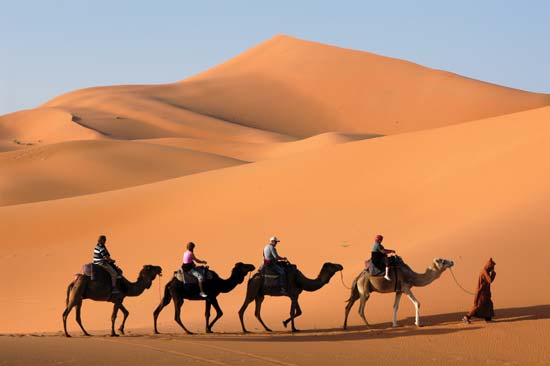 Moroccan Desert in "the war that never ends." The French War Ministry has steadily issued dispatches calling it "a campaign of pacification," noting "resistance of rebellious tribesmen." Actually fierce, Berber horsemen
Moroccan Desert in "the war that never ends." The French War Ministry has steadily issued dispatches calling it "a campaign of pacification," noting "resistance of rebellious tribesmen." Actually fierce, Berber horsemen have been fighting a costly war of thrust and ambush, much like the Indian wars of the western U. S. last century
have been fighting a costly war of thrust and ambush, much like the Indian wars of the western U. S. last century Their active, often pretty women go unveiled, enjoy more rights than Arab women. Remembering that they thrice conquered Spain, 25,000 nomad Berbers have been unable to accept the defeat in 1926 of their leader Abd-el-Krim.
Their active, often pretty women go unveiled, enjoy more rights than Arab women. Remembering that they thrice conquered Spain, 25,000 nomad Berbers have been unable to accept the defeat in 1926 of their leader Abd-el-Krim. Brave, pious, made ferocious by constant pursuit, they have enlisted a mixed crew of bandits and murderers
Brave, pious, made ferocious by constant pursuit, they have enlisted a mixed crew of bandits and murderers  from the mountains, massacred many an unwary French detail. Against them the French have plodded remorselessly under tall, spectacled General Andre Hure who sends home terse casualty lists, plods on.
from the mountains, massacred many an unwary French detail. Against them the French have plodded remorselessly under tall, spectacled General Andre Hure who sends home terse casualty lists, plods on.When General Hure launched his campaign last year, the remnants of the Berber rebels were loose in the desert south  of the Atlas Mountains. In a slow encircling movement he
of the Atlas Mountains. In a slow encircling movement he 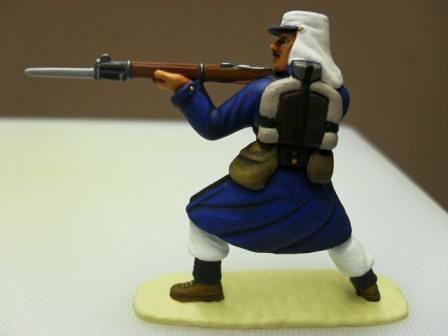 herded them northwest to the rim of the desert. His plodding columns closed in from north, east and southeast like beaters in a lion hunt. On the south and southwest, crack Legion regiments waited for the prey to enter the trap. Slowly, suspiciously,
herded them northwest to the rim of the desert. His plodding columns closed in from north, east and southeast like beaters in a lion hunt. On the south and southwest, crack Legion regiments waited for the prey to enter the trap. Slowly, suspiciously,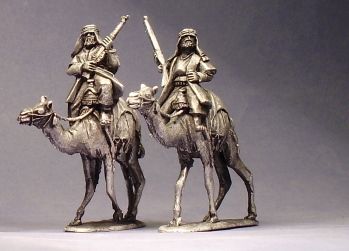 the Berbers, carrying their women and children, rode into the
the Berbers, carrying their women and children, rode into the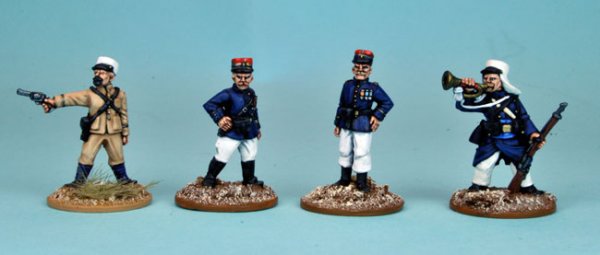 mountains up four confluent valleys a year ago last spring. The trap was sprung.
mountains up four confluent valleys a year ago last spring. The trap was sprung.
 of the Atlas Mountains. In a slow encircling movement he
of the Atlas Mountains. In a slow encircling movement he  herded them northwest to the rim of the desert. His plodding columns closed in from north, east and southeast like beaters in a lion hunt. On the south and southwest, crack Legion regiments waited for the prey to enter the trap. Slowly, suspiciously,
herded them northwest to the rim of the desert. His plodding columns closed in from north, east and southeast like beaters in a lion hunt. On the south and southwest, crack Legion regiments waited for the prey to enter the trap. Slowly, suspiciously, the Berbers, carrying their women and children, rode into the
the Berbers, carrying their women and children, rode into the mountains up four confluent valleys a year ago last spring. The trap was sprung.
mountains up four confluent valleys a year ago last spring. The trap was sprung.General Hure could have ended the "war" at once by sending a few bombing planes over the valleys, turning them into 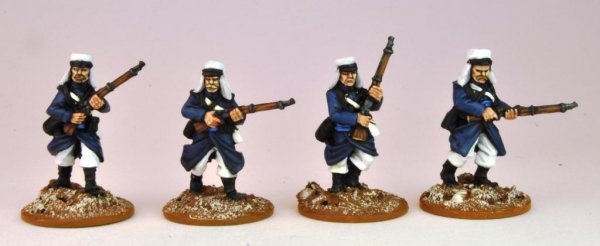 poison gas traps. But he knew that his enemy was brave and honorable, that such a massacre would have sown rebellion in Morocco for decades to come
poison gas traps. But he knew that his enemy was brave and honorable, that such a massacre would have sown rebellion in Morocco for decades to come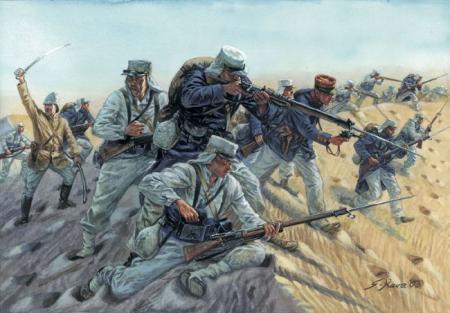 . He chose the harder job of forcing a straightforward surrender. In their strongholds, the leaders kept the Berbers at a pitch by preaching "Death before surrender."
. He chose the harder job of forcing a straightforward surrender. In their strongholds, the leaders kept the Berbers at a pitch by preaching "Death before surrender." The French began a tedious, hazardous prowling up the peaks, picking off snipers. In one desperate skirmish they killed the Berber Generalissimo Sidi Ben Ahmed.
The French began a tedious, hazardous prowling up the peaks, picking off snipers. In one desperate skirmish they killed the Berber Generalissimo Sidi Ben Ahmed. Some of his rattled followers climbed to a stronghold on the mighty Tizier Ouzine peak. French native troops dragged up deadly 75-mm. guns. Last week the 755 spoke systematically, blew peak and stronghold to ruins. Infantry columns occupied the splintered heights, captured the stunned irreconcilables, finished the first half of the campaign. Then they turned to blow the remainder of the Berbers out of the mountains to the northeast. The French War Ministry announced: "Complete pacification is a matter of hours."At this news Spaniards, who once tried to pacify part of Morocco themselves, suddenly remembered something they had long tried to forget. In 1921 Spanish
Some of his rattled followers climbed to a stronghold on the mighty Tizier Ouzine peak. French native troops dragged up deadly 75-mm. guns. Last week the 755 spoke systematically, blew peak and stronghold to ruins. Infantry columns occupied the splintered heights, captured the stunned irreconcilables, finished the first half of the campaign. Then they turned to blow the remainder of the Berbers out of the mountains to the northeast. The French War Ministry announced: "Complete pacification is a matter of hours."At this news Spaniards, who once tried to pacify part of Morocco themselves, suddenly remembered something they had long tried to forget. In 1921 Spanish 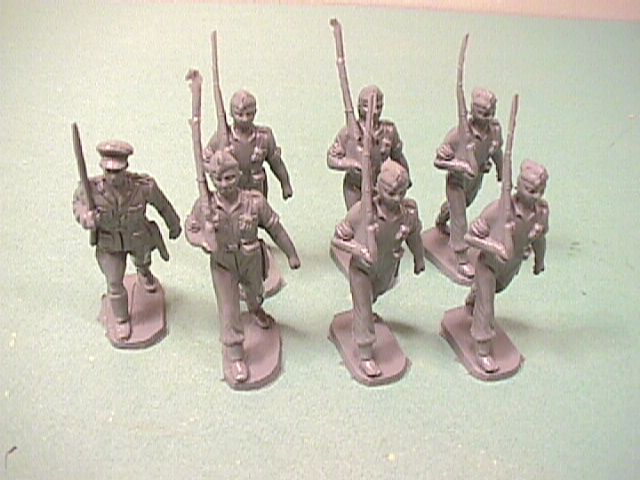 General Fernandez Silvestre marched bravely into the desert with 10,000 men.
General Fernandez Silvestre marched bravely into the desert with 10,000 men.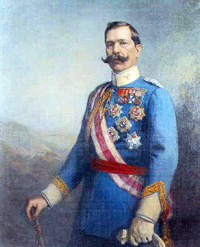 The first Berber charge broke their ranks, stampeded the 10,000 into panic and slaughter. In 1922 a Madrid newspaper reported that General Silvestre escaped his captors by feigning insanity, hides today in South America.
The first Berber charge broke their ranks, stampeded the 10,000 into panic and slaughter. In 1922 a Madrid newspaper reported that General Silvestre escaped his captors by feigning insanity, hides today in South America. Al Khattabi made the cover of Time magazine on August 17, 1925, led a successful armed resistance movement in the Rif, a Berber area of northern Morocco, and helped seal his country's independence from France on April 7, 1956, the day when Paris officially relinquished its protectorate. He was, by every stretch of the imagination, the father of guerrilla warfare against usurpers of powerComing from the modest town of Ajdir, Al Khattabi redefined what it meant to be a Berber in the Rif region. Berbers, descendants of the Vandals and the Semites, stand out for their courage and while many collaborated with occupying powers over the centuries, they Al Khattabi warned General Manuel Fernández Silvestre that his troops should not cross the River Amekran, which he would consider an act of war.
Al Khattabi made the cover of Time magazine on August 17, 1925, led a successful armed resistance movement in the Rif, a Berber area of northern Morocco, and helped seal his country's independence from France on April 7, 1956, the day when Paris officially relinquished its protectorate. He was, by every stretch of the imagination, the father of guerrilla warfare against usurpers of powerComing from the modest town of Ajdir, Al Khattabi redefined what it meant to be a Berber in the Rif region. Berbers, descendants of the Vandals and the Semites, stand out for their courage and while many collaborated with occupying powers over the centuries, they Al Khattabi warned General Manuel Fernández Silvestre that his troops should not cross the River Amekran, which he would consider an act of war.
 poison gas traps. But he knew that his enemy was brave and honorable, that such a massacre would have sown rebellion in Morocco for decades to come
poison gas traps. But he knew that his enemy was brave and honorable, that such a massacre would have sown rebellion in Morocco for decades to come . He chose the harder job of forcing a straightforward surrender. In their strongholds, the leaders kept the Berbers at a pitch by preaching "Death before surrender."
. He chose the harder job of forcing a straightforward surrender. In their strongholds, the leaders kept the Berbers at a pitch by preaching "Death before surrender." The French began a tedious, hazardous prowling up the peaks, picking off snipers. In one desperate skirmish they killed the Berber Generalissimo Sidi Ben Ahmed.
The French began a tedious, hazardous prowling up the peaks, picking off snipers. In one desperate skirmish they killed the Berber Generalissimo Sidi Ben Ahmed. Some of his rattled followers climbed to a stronghold on the mighty Tizier Ouzine peak. French native troops dragged up deadly 75-mm. guns. Last week the 755 spoke systematically, blew peak and stronghold to ruins. Infantry columns occupied the splintered heights, captured the stunned irreconcilables, finished the first half of the campaign. Then they turned to blow the remainder of the Berbers out of the mountains to the northeast. The French War Ministry announced: "Complete pacification is a matter of hours."At this news Spaniards, who once tried to pacify part of Morocco themselves, suddenly remembered something they had long tried to forget. In 1921 Spanish
Some of his rattled followers climbed to a stronghold on the mighty Tizier Ouzine peak. French native troops dragged up deadly 75-mm. guns. Last week the 755 spoke systematically, blew peak and stronghold to ruins. Infantry columns occupied the splintered heights, captured the stunned irreconcilables, finished the first half of the campaign. Then they turned to blow the remainder of the Berbers out of the mountains to the northeast. The French War Ministry announced: "Complete pacification is a matter of hours."At this news Spaniards, who once tried to pacify part of Morocco themselves, suddenly remembered something they had long tried to forget. In 1921 Spanish  The first Berber charge broke their ranks, stampeded the 10,000 into panic and slaughter. In 1922 a Madrid newspaper reported that General Silvestre escaped his captors by feigning insanity, hides today in South America.
The first Berber charge broke their ranks, stampeded the 10,000 into panic and slaughter. In 1922 a Madrid newspaper reported that General Silvestre escaped his captors by feigning insanity, hides today in South America. Al Khattabi made the cover of Time magazine on August 17, 1925, led a successful armed resistance movement in the Rif, a Berber area of northern Morocco, and helped seal his country's independence from France on April 7, 1956, the day when Paris officially relinquished its protectorate. He was, by every stretch of the imagination, the father of guerrilla warfare against usurpers of powerComing from the modest town of Ajdir, Al Khattabi redefined what it meant to be a Berber in the Rif region. Berbers, descendants of the Vandals and the Semites, stand out for their courage and while many collaborated with occupying powers over the centuries, they Al Khattabi warned General Manuel Fernández Silvestre that his troops should not cross the River Amekran, which he would consider an act of war.
Al Khattabi made the cover of Time magazine on August 17, 1925, led a successful armed resistance movement in the Rif, a Berber area of northern Morocco, and helped seal his country's independence from France on April 7, 1956, the day when Paris officially relinquished its protectorate. He was, by every stretch of the imagination, the father of guerrilla warfare against usurpers of powerComing from the modest town of Ajdir, Al Khattabi redefined what it meant to be a Berber in the Rif region. Berbers, descendants of the Vandals and the Semites, stand out for their courage and while many collaborated with occupying powers over the centuries, they Al Khattabi warned General Manuel Fernández Silvestre that his troops should not cross the River Amekran, which he would consider an act of war.Fernández Silvestre dismissed the message in a moment of folly and, instead, defied Al Khattabi by installing a military post on the river near the Abarrán hamlet.
In the first skirmish, Temsamani and Tuzuni tribal elements loyal to Al Khattabi attacked and killed 179 of the 300 occupiers, with the rest of the garrison in flight. Additional battles ensued, which led Fernández Silvestre to commit nearly 3,000 men, although Al Khattabi defeated the assembled force within two days.
For Spain, the battle at Anual (or Anoual) was a disaster. By the time a ceasefire was reached, an estimated 16,000 soldiers were dead and 24,000 wounded, 150 cannons were destroyed or captured, and at least 25,000 rifles were confiscated. An additional 700 Spanish soldiers were taken prison seldom relinquished the quest for independence.
seldom relinquished the quest for independence.
 seldom relinquished the quest for independence.
seldom relinquished the quest for independence. Reputedly 300 or more Spanish captives are still being held in slavery by Moroccan tribes. In part King Alfonso's fall was due to indignation that his Government had not freed these slaves, preferred denying their existence. Last week the Spanish Republic realized that for France to recover the rumored 300 would shame Spain for all time. Hastily the Government sent Spanish emissaries among the tribes to ransom any slaves they might find. They had instructions to bargain fast before the French had time to finish their Berber pacification.all wargames figures artizan
No comments:
Post a Comment